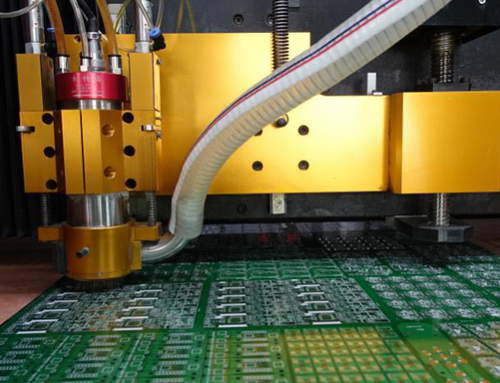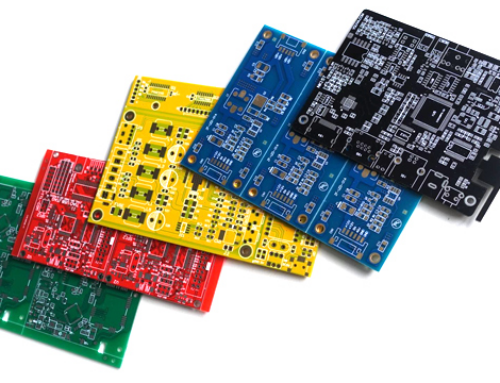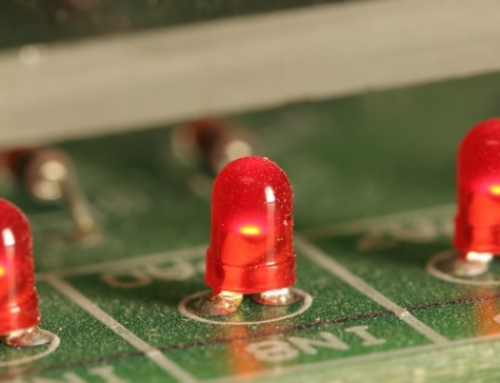What are the uses of pull-up resistors and pull-down resistors?
Resistors” target=”_blank”>Pull-up resistors and pull-down resistors are commonly used components in digital circuits.
Their main function is to determine the level state of circuit nodes when there is no driver, and to improve the stability of the circuit.
The following is It is a related introduction to pull-up resistors and pull-down resistors: 12
Pull-up resistor. Pull-up resistors connect a circuit node to a positive supply (usually Vcc or supply voltage) to ensure that the node remains high (logic “1”) when no external signal is input.
This signal can pull the signal line low to a logic low level when an external device generates a logic low level. The pull-up resistor can also improve the driving capability of the output pin and increase the voltage level to ensure the stability and reliability of the circuit.
Pull-down resistor. Pull-down resistors connect a circuit node to ground (usually GND) to ensure that the node remains low (logic “0”) when no external signal is input. When an external device generates a logic high signal, this signal can pull the signal line to a logic high level. Pull-down resistors also help improve circuit stability and reliability.
In addition, pull-up and pull-down resistors are also used to maintain the stable state of the input pin to prevent unstable input results or output oscillation. In specific applications, such as level conversion circuits implemented with transistors, pull-up and pull-down resistors are also necessary components.
Resistors play a role in limiting current in circuits, and pull-up resistors and pull-down resistors are commonly mentioned and commonly used resistors. A large number of pull-up resistors and pull-down resistors are used in the design of every system.
These two are collectively called “pull resistors”.
Their most basic function is to clamp the signal line with an uncertain state to a high value through a resistor. level (pull-up) or low level (pull-down),
but regardless of the specific usage, this basic function is the same, but the resistance requirements of the resistor will be different in different applications. Let’s learn about it together.
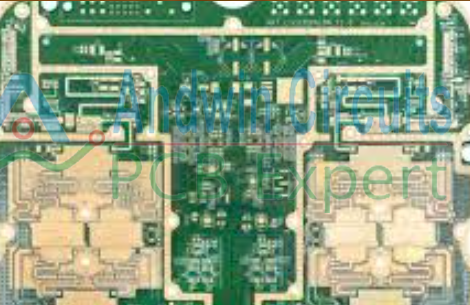
Let them:
1. Pull-up resistor
Principle: On the wire connected to the pull-up resistor, if the external component is not enabled, the pull-up resistor “weakly” pulls the input voltage signal “high”. When external components are not connected, the external components “look” high impedance to the input. At this time, the voltage at the input port can be pulled up to a high level through the pull-up resistor. If the external component is enabled, it will remove the high level set by the pull-up resistor. In this way, the pull-up resistor allows the pin to maintain a defined logic level even when no external components are connected.
2. Pull-down resistor
Concept: Connect an uncertain signal to GND through a resistor and fix it at a low level.
3. Main function
The main function of the pull-down resistor is to give the line (node) a fixed level when the circuit driver is turned off together with the upper resistor.
(1) Increase the voltage level:
a) When the TTL circuit drives the COMS circuit, if the high level output by the TTL circuit is lower than the lowest high level of the COMS circuit (usually 3.5V), then it is necessary to connect a pull-up resistor to the output end of the TTL to improve the Outputs a high level value.
b) The OC gate circuit must add a pull-up resistor to increase the high-level value of the output.
(2) Increase the driving capability of the output pins. Pull-up resistors are often used on some microcontroller pins.
(3) Resistor matching to suppress reflected wave interference: Resistance mismatch in long-term transmission can easily cause reflected wave interference. Adding the pull-down resistor to resistor matching can effectively suppress reflected wave interference.
(4) N/Apin anti-static and anti-interference: On the COMS chip, in order to prevent damage caused by static electricity, unused pins cannot be left floating. Generally, a pull-up resistor is connected to reduce the input impedance and provide a load discharge path. At the same time, if the pin is left floating, it is easier to accept electromagnetic interference from the outside.
(5) Preset space state/default potential: Some CMOS input terminals are connected with pull-down resistors to preset the default potential. When you are not using these pins, pull these inputs down to 0 or pull up to 1. On buses such as the I2C bus, the idle state is obtained by pull-up and pull-down resistors.
(6) Improve the noise margin of the chip input signal: If the input terminal is in a high-impedance state, or the high-impedance input terminal is in a floating state, a pull-down or pull-down is required at this time to avoid receiving random levels and affecting the circuit operation. Similarly, if the output is in a passive state, a pull-down or pull-down is required, for example, the output is just the collector of a triode. Thereby improving the noise margin of the chip input signal and enhancing the anti-interference ability.
The above is an introduction to the functions of pull-up resistors and pull-down resistors. The selection of pull-up resistors and pull-down resistors should be set based on the characteristics of the switch tube and the input characteristics of the lower-level circuit; factors to be considered include: the balance between driving capability and power consumption, the driving requirements of the lower-level circuit, and the setting of high and low levels. , frequency characteristics, etc.
A well designed high frequency PCB ( printed circuit board RF PCB) can provide a significant boost,
As the RF PCB can improve a product’s performance, stability and reliability.
Resistors play a role in limiting current in circuits, and pull-up resistors and pull-down resistors are commonly mentioned and commonly used resistors.
A large number of pull-up resistors and pull-down resistors are used in the design of every system. These two are collectively called “pull resistors”.
Their most basic function is to clamp the signal line with an uncertain state to a high value through a resistor. level (pull-up) or low level (pull-down), but regardless of the specific usage, this basic function is the same, but the resistance requirements of the resistor will be different in different applications. Let’s learn about it together.
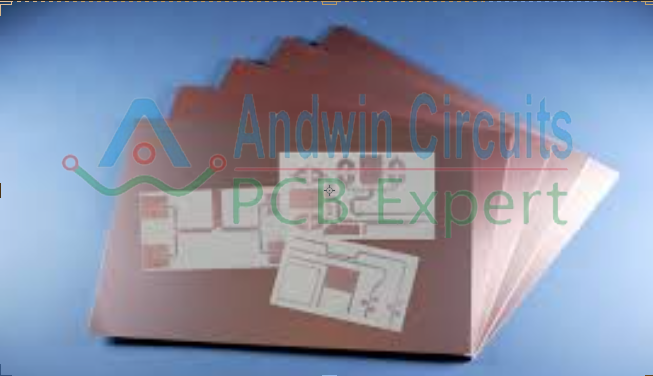
Let them:
1. Pull-up resistor
(1) Concept: Connect an uncertain signal to the power supply VCC through a resistor and fix it at a high level.
(2) Principle: On the wire connected to the pull-up resistor, if the external component is not enabled, the pull-up resistor will “weakly” pull the input voltage signal “high”. When external components are not connected, the external components “look” high impedance to the input. At this time, the voltage at the input port can be pulled up to a high level through the pull-up resistor. If the external component is enabled, it will remove the high level set by the pull-up resistor. In this way, the pull-up resistor allows the pin to maintain a defined logic level even when no external components are connected.
2. Pull-down resistor
Concept: Connect an uncertain signal to GND through a resistor and fix it at a low level.
3. According to the meaning of pull-up resistor and pull-down resistor, the most common usages are as follows.
(1) Used in OC/OD doors
The so-called OC gate is an Open Collector, with an open collector, as shown in the figure below:
The so-called OD gate is Open Drain, with an open drain, as shown in the figure below.
Therefore, the OC gate is for transistors, and the OD gate is for MOS tubes. It can be seen from the OC gate and OD circuit that when the input level is H, the output level is L. When the input level is L, the output level is in an unstable state, that is, a high resistance state, and is susceptible to outside interference.
OC gates and OD gates do not have the ability to output high levels. At this time, if a pull-up resistor is added to the collector or drain, as shown in the figure below:
When the input is high level, the output is still low; when the output is low level, the output level is VCC. At this time, the OC gate and OD gate have the function of outputting high and low levels, and the levels are fixed and clamped at VCC or GND.
(2) Used in button circuit
The working principle of the button circuit is that the level is inverted when the button is not pressed and when it is pressed. The MCU detects that the signal level of this pin is inverted to determine whether the button is pressed. The schematic diagram is as follows:
When the button is not pressed, the IO port of the MCU detects a high level; when the button is pressed, a low level is detected. The pull-up resistor is to ensure that the button is at a fixed level when the button is not pressed. high level.
(3) Used in IIC bus
The pull-up resistor on the IIC bus must be added to ensure that both SDA and SCL are at a high level in the idle state.
When the IIC protocol is used at a level above 3.3V, it is recommended to use a 4.7K pull-up resistor. When the voltage is less than 3.3V, it is recommended to use a pull-up resistor of about 2.2~3K (experience value).
(4) Used in floating pins of logic IC
In digital logic circuits, because the internal logic gates are turned on and off at the same time, the SSN noise is larger than that of ordinary circuits. If the pins are left floating, they are more susceptible to electromagnetic interference from inside the chip and the outside world. Unused input pins in digital circuits must be Connect to a fixed level. It is recommended to use a 1k resistor to connect to high level or ground.
(5) Used in terminal matching
Pull-up and pull-down resistors are often used in high-speed circuits for terminal matching. Because the impedance discontinuity of the transmission line will cause reflection of the signal signal, the waveform will appear overshoot, backchannel, ringing and other phenomena.
Therefore, source and destination matching must be done on the transport.
Generally speaking, there are two types of terminal matching, parallel termination and Thevenin termination.
Parallel termination – Connect a resistor consistent with the characteristic impedance of the transmission line in parallel to VCC or GND at the terminal. The advantage of terminal parallel termination is that the signal energy will be eliminated at the load end before it is reflected back to the source end. The disadvantage is that the pull-up and pull-down resistors will cause power consumption.
Thevenin Termination – Thevenin termination, also known as voltage divider termination, uses a pull-up resistor and a pull-down resistor connected to the terminal at the same time. The advantage is that it can reduce the terminal’s requirements for the source drive capability, but the disadvantage is that both the upper and lower pull-up resistors consume power.
Of course, there are many other occasions where pull-up and pull-down resistors need to be added according to the requirements of the chip or the design of the circuit. For example, in a level conversion circuit, a pull-up resistor can be used to convert between levels.

